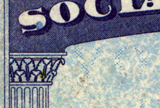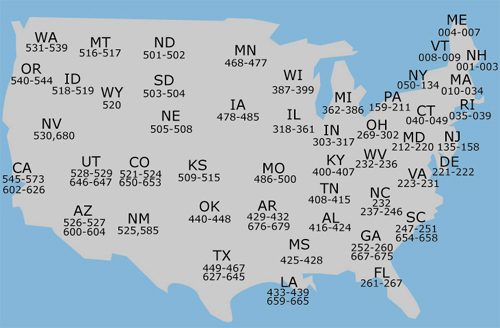mixed numbers:
The hidden meaning
of everyday digits
Social Security Numbers
 We are often asked our Social Security numbers in official business as a means of identification: at school, when applying for a loan, for tax purposes. This number is useful in many cases because it is unique, and serves to reduce the confusion among names and other often coincidental information.
We are often asked our Social Security numbers in official business as a means of identification: at school, when applying for a loan, for tax purposes. This number is useful in many cases because it is unique, and serves to reduce the confusion among names and other often coincidental information.
But what does it mean?
A social security number consists of nine digits, three area numbers, two group numbers, and four serial numbers.
When the Social Security Administration began issuing numbers to U.S. citizens, it based area numbers on the same method as the U.S. Postal ZIP codes (numbers increase from east to west) with a few exceptions: 000 has never been issued; 700 to 729, originally for Railroad workers, have been discontinued. The area number is code for the region of the address appearing on SS application forms.

Group numbers represent the order in which SSNs for an area are assigned. They are issued in following order: odd numbers 01 to 09, even numbers 10 to 98, even numbers, 02 to 08, and odd numbers 11 to 99. 00 group numbers are never assigned. Group numbers allow you to determine relative chronological order of cards from the same region.
Serial Numbers are assigned based on order as well. However, unlike group numbers, serial numbers are always assigned in a strictly increasing manner. 0000 is never assigned.
All of this information is available from the Social Security Administration, which, based on the Freedom of Information Act, is required to provide this and other information to citizens. Most government agencies provide similar information to citizens as well; a good place to determine the origins of any system in the U.S. is to check its agency's website.
The Social Security Administration also maintains a list of the highest area and group numbers it assigns to aid in the identification of false numbers.
For More Information:
© Patrick Williams 2003-2004
xhtml | CSS | 508